SUMMARY
This is AI generated summarization, which may have errors. For context, always refer to the full article.

Amina Ali Adan was born in the Kenyan town of Garissa, 65 miles away from Dadaab, one of the world’s largest refugee camps, situated near the Somali border. She is just one of tens of thousands of Kenyan citizens who have been registered as refugees — many while children. Now in her 30s and a mother of three, her life is defined by her lack of a Kenyan national ID.
Adan is a victim of what is known as double registration. Fleeing drought within the country’s borders in the 1990s, many ethnic Somali Kenyans falsely claimed to be escaping Somalia’s civil war, in order to access vital food aid. Now, because their details appear on biometric refugee databases, the very system responsible for protecting asylum seekers has effectively rendered them stateless.
“There are many challenges if you don’t have an ID,” Adan said. “If you want to open up a bank account, you need an ID. If you want to see someone in court, you will be asked for an ID. In Kenya, you cannot go anywhere without an ID.”
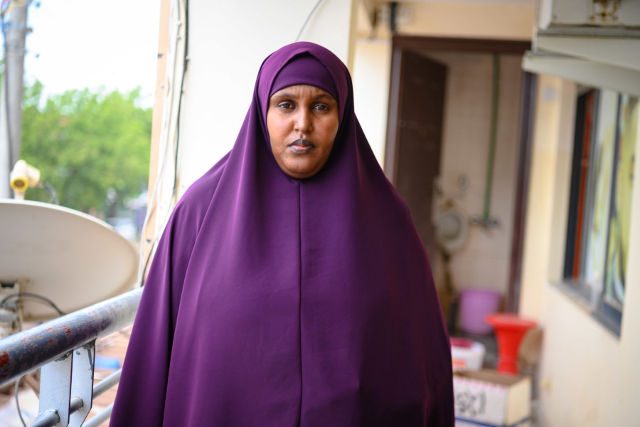
Without this crucial legal document, many political rights and economic entitlements are inaccessible in Kenya. They range from taking formal employment and registering a cell phone SIM card to opening a bank account and even entering government and business offices.
The outbreak of the Somali civil war in the early 1990s coincided with a drought in northeastern Kenya that drove tens of thousands of desperate citizens towards the camp. It was at this time that Adan, then five years old, was taken to Dadaab by her grandmother.
Faced with a vast influx of people, the United Nations High Commissioner for Refugees (UNHCR) — the global agency responsible for displaced people — struggled to distinguish between those uprooted by conflict in Somalia and ethnic Somalis with Kenyan citizenship. Because the boundary between Somalia and Kenya is highly porous and family networks often stretch across territories, many ethnic Somali Kenyans and their families were able to pass as refugees.
In Dadaab, ethnic Somali Kenyans could access food aid and education that, even as citizens of one of the country’s most marginalized regions, were often out of their reach. Another draw was the prospect of relocation in Europe or the U.S.
Adan’s grandmother could not have predicted that a seemingly harmless lie to feed herself and her granddaughter would have such serious implications so many years later. Over the past decade, tens of thousands of ethnic Somali Kenyans who have applied for a Kenyan national ID have been turned away on the grounds that they were already registered as refugees.
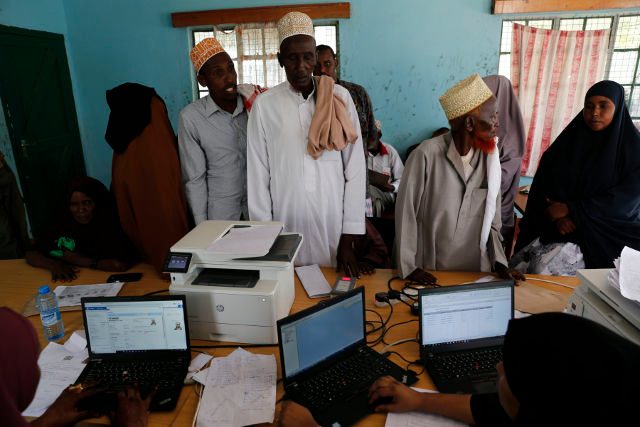
The root of this problem lies in an increasing global fervor for the collection of biometric data. In recent years, biometrics have become part of the global development agenda and a proposed panacea to a range of problems. One of the UN’s Sustainable Development Goals is to provide legal identity to all by 2030. International organizations ranging from the World Bank to the World Food Program, in conjunction with governments and multinational tech companies, have promoted the use of digital identity systems.
Nations across the global south have embraced this new technology. In countries including India, Ghana, Lebanon, Nigeria and South Africa, biometric identifiers are increasingly used in electoral processes, the distribution of aid, to gain access to financial services and to manage refugee populations.
The use of centralized, integrated biometric databases has been hailed as a definitive solution to the problem of identity fraud. In the early 2000s, the UNHCR began rolling out fingerprint and iris scans in refugee camps across the world. Biometric registration was first introduced to Kenya in 2007, in a bid to cut costs and reduce any further double registration.
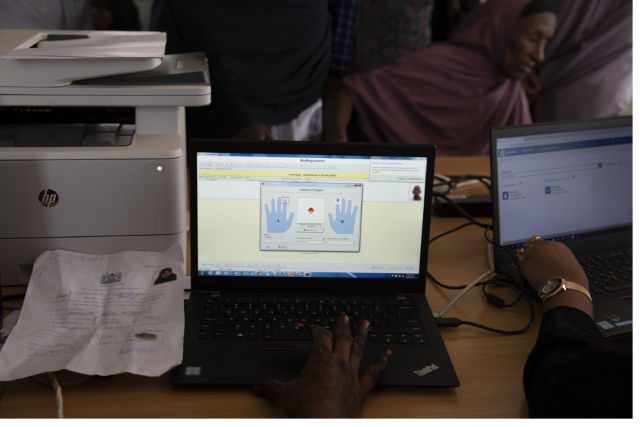
The agency soon began sharing parts of its biometric and IT systems with Kenya’s Refugee Affairs Secretariat, which has since 2011 slowly and unevenly taken over the refugee registration process. The UNHCR has also strengthened the Kenyan state’s ability to carry out registration and develop its own refugee database.
Enabling host countries to build or access refugee databases has often stood in conflict with the humanitarian goals of the UNHCR. The Kenyan government has a long history of hostility towards both ethnic Somali citizens and refugees. Kenyan Somali citizens also face systemic discrimination.
Now, the National Registration Bureau of Kenya can run the fingerprints of any person who applies for a national ID through the government’s refugee database. If they are flagged as holding refugee status, the document cannot be issued. This throws people like Amina Ali Adan into legal limbo.
As one Kenyan man who preferred to remain anonymous explained: “You can’t bypass the power of that fingerprint. It is a blockade.” He had falsely claimed refugee status long before the Kenyan government had acquired the technical capacity to crosscheck citizens. Though he possesses a worn Kenyan ID, obtained at age 18, he fears that as the state’s biometric systems improve, he might one day be found out.
This collision of administrative policy and data integration has inadvertently marginalized tens of thousands of Kenyans. Like Adan, Hamdi Mohamed Mahamoud is a Kenyan citizen from Garissa. Now in his 20s, he cannot obtain a Kenyan ID because he is registered as a refugee. Unable to attend university or gain formal employment, Mahamoud opened up a kiosk selling phone credit, sodas and sundries. But his undocumented status is a constant impediment to business.
“If I want to open an M-Pesa line,” he said, referring to the popular mobile payment service, “I can’t register without an ID. If I get a bit of money, I don’t have a place to put it. It’s necessary for me to keep it at home. And at home, it can be lost. I don’t have any kind of [bank] account.”
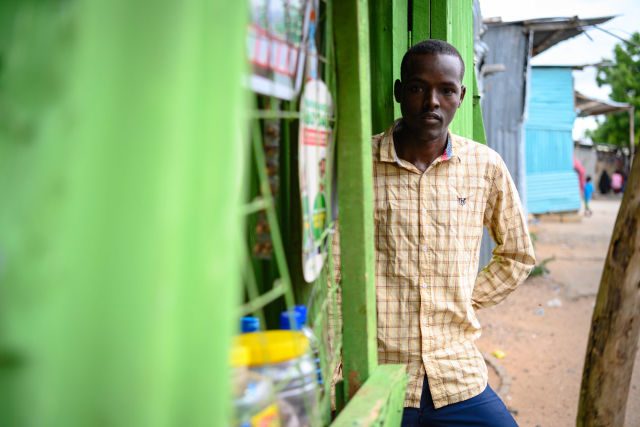
Trapped in legal limbo
Last year, the Kenyan government agreed to address the problem of double registration. Grassroots pressure from local civil society groups like Haki na Sheria (meaning ‘Justice and Law’ in Swahili) was instrumental in this decision. In November, vetting committees were established in counties that border Somalia, in order to assess the veracity of citizenship claims. The aim was to remove from the refugee database anyone deemed to be a genuine Kenyan citizen.
Crowds of frustrated people lined up for days, waiting to be processed. Some traveled over four hundred miles to attend. Others were turned away for lacking the correct documents. Many young men refused to come forward at all, fearing interrogation by security agents seeking to weed out members of the Somali militant group Al-Shabaab. Almost 15,000 people were vetted in Garissa County alone. This is partially attributable to Haki na Sheria, which provided paralegal support to victims of double registration throughout the vetting process. However, many were still left out, owing to the inability of government officials to cover every location within the time period set aside for the process.
Despite these hitches, many civil society groups and double-registered individuals welcomed the vetting program. However, there is concern that the Kenyan government — which has started and abandoned similar schemes in the past — will not stick to its promise to deregister citizens from the refugee database.
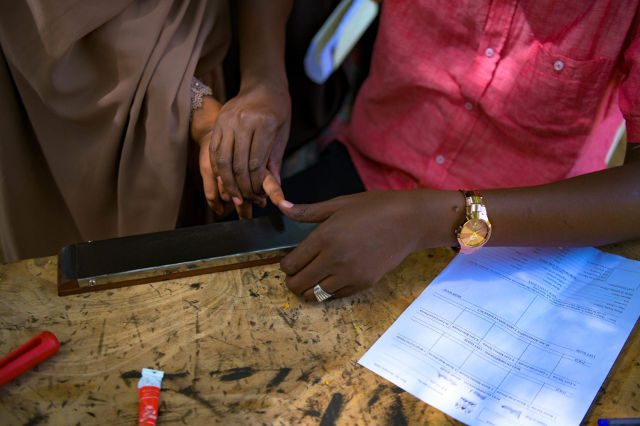
The problem of double registration in Kenya highlights the pitfalls of humanitarian biometrics. Under donor pressure, refugee organizations often share vulnerable people’s data in order to limit fraud and strengthen the capacities of host states. But linking refugee systems to those of host countries, which do not always prioritize the protection of displaced people, can be risky. This raises questions about the merits of collecting sensitive personal information in the first place and the risks of storing it in centralized databases.
In Kenya, thousands of citizens face an increasingly uncertain future. Among their concerns is the threat of deportation. The Kenyan government routinely carries out deportations of Somalis living in the country, often rounding up both citizens and refugees.
“Today, I heard that people were being picked up from their homes and deported to Somalia. If I was taken to Somalia, I wouldn’t even know where I was,” said Adan Abdullahi Daqane, who is also double registered. “This time, I pray to God to help us, to bring us IDs.” – Rappler.com
This piece was produced in collaboration with Privacy International
Keren Weitzberg is a researcher and educator based at University College London. She is the author of “We Do Not Have Borders: Greater Somalia and the Predicaments of Belonging in Kenya”, and is currently working on a project on ID cards and biometrics in Kenya.
This article has been republished from Coda Story with permission.
Add a comment
How does this make you feel?
There are no comments yet. Add your comment to start the conversation.